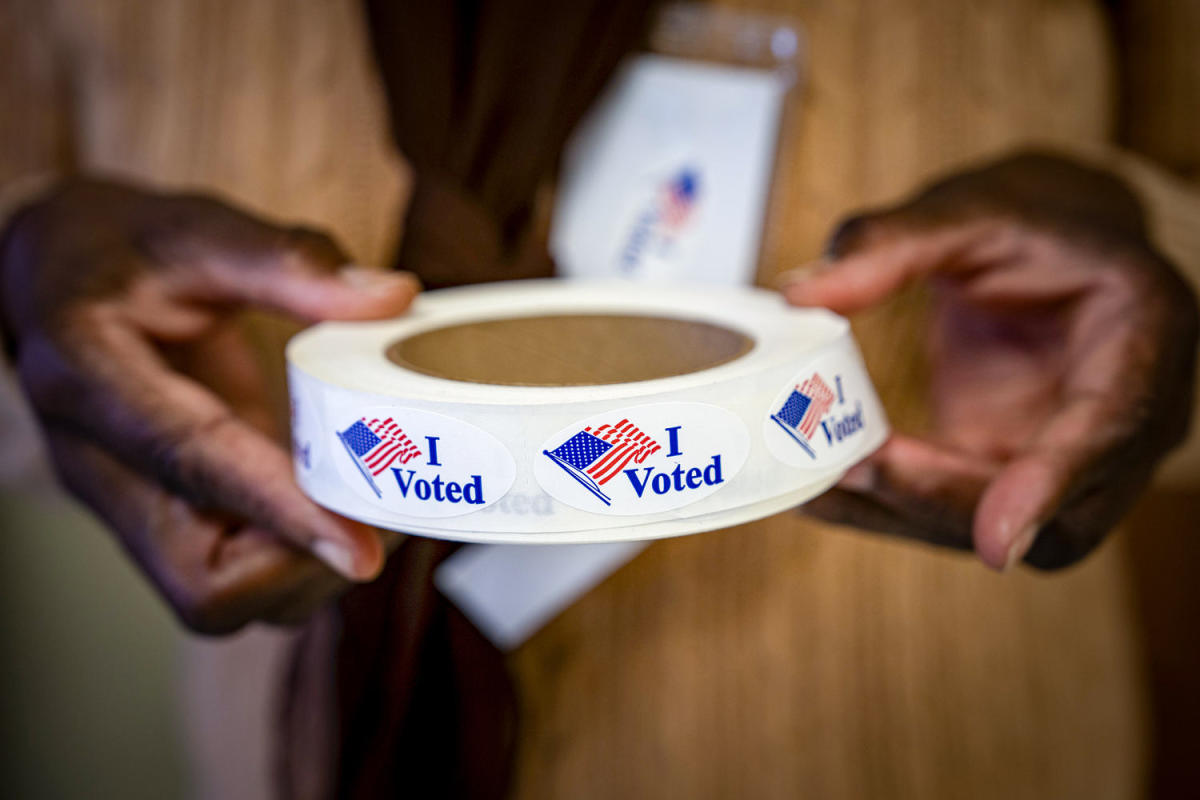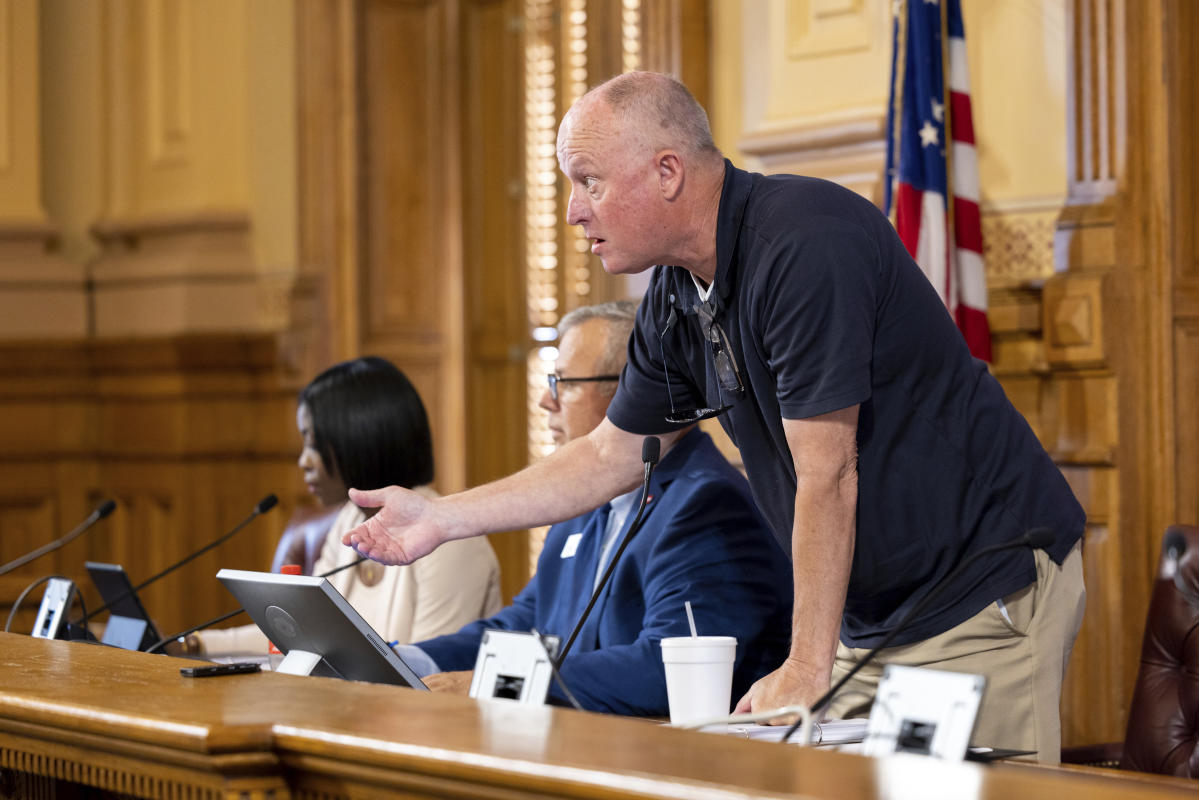On Thursday, the Biden administration announced it has reached an agreement with pharmaceutical companies to lower the prices of the 10 most expensive prescription drugs covered by Medicare.
It’s part of the federal government’s first-ever drug price negotiations, which the government says could ease the financial burden on the estimated 1 in 7 seniors in the U.S. who struggle to pay for their medications.
Below are the negotiated prices for the medications, based on a 30-day supply:
-
Eliquis, a blood thinner from Bristol Myers Squibb and Pfizer: negotiated price of $231, down from list price of $521.
-
Xarelto, a blood thinner from Johnson & Johnson; negotiated price $197, down from list price of $517.
-
Januvia, a diabetes drug from Merck: negotiated price $113, down from list price of $527.
-
Jardiance, a diabetes drug from Boehringer Ingelheim and Eli Lilly: negotiated price $197, down from list price of $573.
-
Amgen’s rheumatoid arthritis drug Enbrel: negotiated price $2,355, down from list price of $7,106.
-
Imbruvica, a blood cancer drug from AbbVie and Johnson & Johnson: negotiated price $9,319, down from list price of $14,934.
-
Farxiga, a drug for diabetes, heart failure and chronic kidney disease from AstraZeneca: negotiated price $178, down from list price of $556.
-
Entresto, a heart failure drug from Novartis: negotiated price $295, down from list price of $628.
-
Stelara, a psoriasis and Crohn’s disease drug from J&J: negotiated price $4,695, down from list price of $13,836.
-
Fiasp and NovoLog, diabetes drugs from Novo Nordisk: negotiated price $119, down from list price of $495.
The new negotiated prices were compared with the 2023 catalogue prices of the medicines.
It’s important to note that these numbers don’t directly compare the new negotiated prices to what Medicare and the insured would have paid originally, said Stacie Dusetzina, a professor of health policy at Vanderbilt University in Nashville, Tennessee. The list price is the full retail price of a drug and doesn’t include any discounts or reimbursements a drug company may have offered.
However, according to Dusetzina, these are “quite large discounts”.
“I think it shows that they are taking negotiations very seriously and they are trying to get much lower prices,” she said.
The lower prices are the result of months of heated negotiations between the federal government and pharmaceutical companies over the expensive drugs.
The prices won’t go into effect until 2026, but the measure is a milestone for Medicare. The federal government has never been able to negotiate directly with drugmakers over the prices of their prescription drugs.
“It’s a historic moment,” White House domestic policy adviser Neera Tanden said on a call with reporters Wednesday night. “Millions of seniors and others on Medicare will soon see their prescription drug costs fall for some of the most common and expensive medications that treat heart disease, cancer, diabetes, blood costs and more.”
Medicare provides health insurance to more than 65 million people in the US
During Wednesday’s call, administration officials said the newly negotiated prices are expected to save Medicare enrollees $1.5 billion in out-of-pocket costs in the first year.
Negotiations—as laid out in the Inflation Reduction Act—began in earnest in January, when Medicare presented its opening prices to the drug companies.
The $1.5 billion comes on top of savings from other provisions in the Inflation Reduction Act, including a $35 monthly cap on insulin co-payments and an annual cap on prescription drug co-payments, officials said.
The negotiations are expected to save Medicare $6 billion in the first year, officials said.
Health and Welfare Minister Xavier Becerra called the negotiations “intensive” on Wednesday.
“I had the privilege of working closely with our HHS team to oversee the negotiations,” Becerra said. “It took both sides to get a good deal.”
Pharmaceutical companies fight against lower prices
The federal government has until March 2025 to publish an explanation of how the negotiated prices were reached. If a drug company refused to negotiate, it faced a tax penalty, which could be waived if the drug company chose to pull its drug from the Medicare program.
All pharmaceutical companies with which negotiations are taking place have been asked for comment.
A Novartis spokesman called the negotiations “unconstitutional.”
“It will have long-lasting and devastating consequences for patients, limiting access to medicines now and in the future,” the spokespeople said in a statement.
Steve Ubl, president and CEO of the pharmaceutical industry’s trade association Pharmaceutical Research and Manufacturers of America, said in a statement that the Biden administration is using the negotiations to “make political headlines.”
“There is no guarantee that patients will get lower co-payments,” he said.
The administration plans to use the negotiations to bolster Vice President Kamala Harris’ campaign ahead of the presidential election against former President Donald Trump. Harris and President Joe Biden are expected to appear together on Thursday to tout the program’s savings.
The discussion on Wednesday included Becerra, Tanden and Chiquita Brooks-LaSure, administrator of the Centers for Medicare & Medicaid Services.
Concerned about unaffordable medicines
A study published Wednesday in JAMA found that more than half of seniors are very concerned about the cost of medical care and prescription drugs in the run-up to the election.
According to KFF, a nonprofit organization that conducts health policy research, nearly 9 in 10 adults ages 65 and older say they take at least one prescription drug.
An analysis by the Commonwealth Fund, a nonprofit health care research organization, found that U.S. retail prices (prices that pharmacists charge patients or insurers before rebates or reimbursements) for the 10 selected drugs were three to eight times higher compared with prices in other countries of similar size and wealth.
According to CMS, the 10 selected drugs together accounted for more than $50 billion in Medicare Part D spending from June 1, 2022, through May 31, 2023, or 20%.
According to the agency, Medicare recipients will spend $3.4 billion out of pocket on these drugs in 2022, with the average out-of-pocket spending on the most expensive drugs being a whopping $6,497 per insured person.
The 10 negotiated drugs are just the beginning: In 2027, negotiated prices will go into effect for 15 more drugs, followed by 15 more in 2028, and 20 more in each subsequent year. It’s possible that seniors will save even more in the years to come.
The outcome could be jeopardized if pharmaceutical companies succeed in blocking the law through lawsuits, which they have not succeeded in doing so.
“It’s a great accomplishment that they reached an agreement with all 10 drug manufacturers,” Dusetzina wrote in an email. “No one chose to leave Medicare and Medicaid in protest of their negotiated prices. That’s a success!”
The negotiations are limited to drugs under Medicare Part D, which covers drugs used at home.
In the coming years, however, drugs under Medicare Part B that are administered in medical settings – such as chemotherapy drugs – will also be subject to negotiations.
This article was originally published on NBCNews.com



